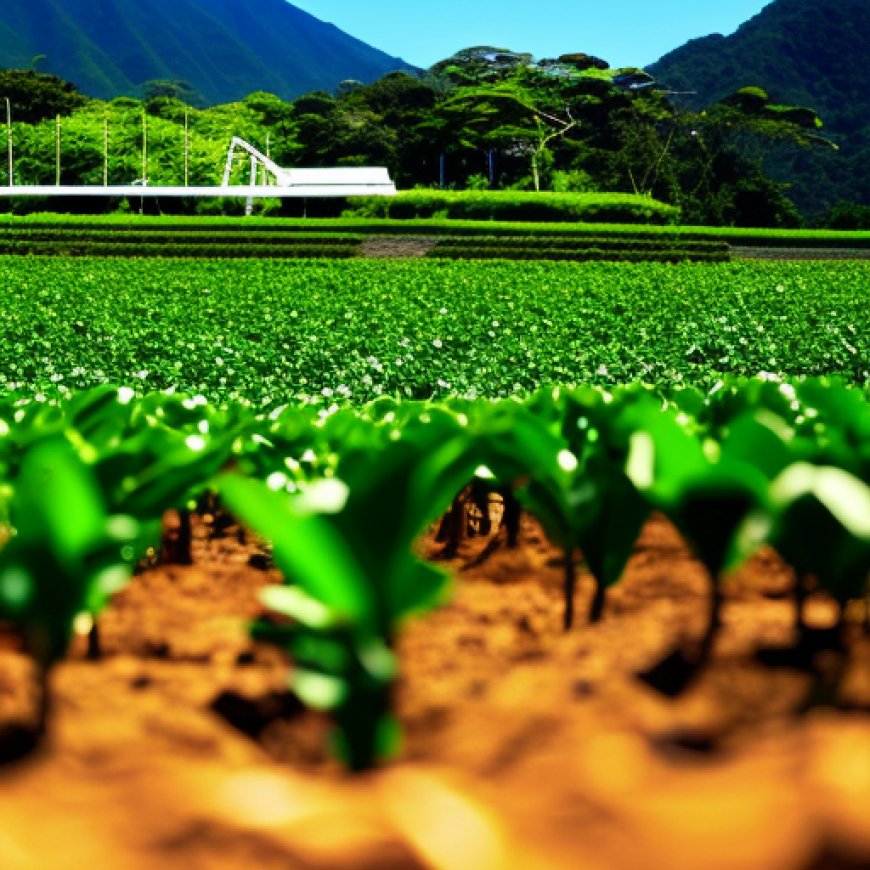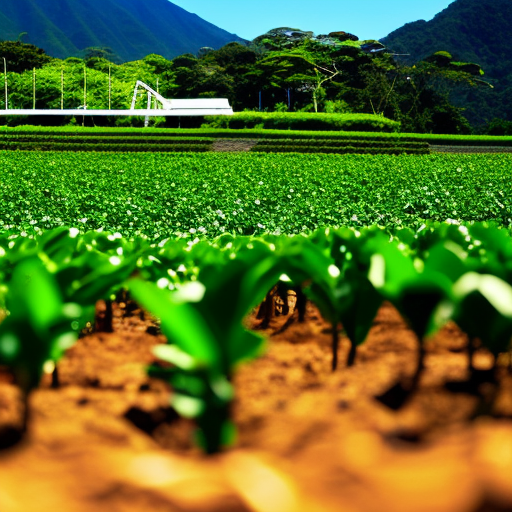How the RECSOIL initiative is driving change in Costa Rica | Global Soil Partnership | Food and Agriculture Organization of the United Nations
How the RECSOIL initiative is driving change in Costa Rica | Global Soil Partnership Food and Agriculture Organization of the United Nations


03/04/2024
The RECSOIL Costa Rica project is part of the actions of the SCALA Costa Rica – Increasing Climate Ambition on Land Use and Agriculture program, a joint effort between MAG, the Ministry of Environment and Energy (MINAE), FAO and the United Nations Development Program (UNDP), with the support of the International Climate Initiative (IKI).
Currently, more than 45 cattle and coffee farms are participating in the first pilot of the initiative in the country, implementing sustainable practices ranging from grazing management to erosion control techniques.
Baseline Establishment: A Key Step towards Achieving Sustainable Development Goals
On 27 February 2024, a follow-up workshop was held to present and discuss the results of the first year of the project, establishing a solid baseline. The session had the active participation of more than 60 people, from the Vice Minister of Agriculture and Livestock to technicians and producers, demonstrating a comprehensive and collaborative commitment to the initiative. As highlighted by both Ms Andrea Padilla (Assistant FAO Representative in Costa Rica) and Mr Edwin Vega Araya (RECSOIL national coordinator in Costa Rica), “institutional interaction is key to the development of the project“.
The Importance of Establishing a Baseline
The baseline acts as the fundamental building block upon which all subsequent project assessments and progress are built. It provides a detailed and objective snapshot of the status of soil organic carbon stocks and other key indicators. This initial information not only establishes a clear baseline for measuring project impacts over time, but also enables informed management decisions. Having a robust and transparent baseline is crucial to ensure the success, long-term sustainability, and scaling of the RECSOIL initiative in the country. “The baseline information and estimation process allow us to train our technicians with new tools, generate valuable information for other projects and, at the same time, make the image of the primary sector transparent to society,” emphasized Mr Juan Celín Chacón and the Dos Pinos technical team.
Insights from the Initial Results
The baseline results revealed the remarkable capacity of most of the project soils to store carbon, especially those of volcanic origin (Andosols) and located at altitudes above 1 000 meters above sea level, exceeding an average of 110 tonnes of carbon per hectare. “These results follow the trend of previous observations of the NAMA Programme – Nationally Appropriate Mitigation Measures- in the region“, highlighted Dr. Sergio Abarca from INTA.
The comprehensive analysis based on this baseline information and other indicators identified crucial factors that regulate carbon levels, such as altitude, temperature, precipitation, slope, texture and soil origin. It also showed the vital importance of maintaining balanced nutrition in soils and crops to favor carbon sequestration: those farms that exhibited adequate levels of nitrogen, phosphorus and bases also had the highest levels of soil carbon. “We have to pay attention to all nutrients if we want to increase carbon,” stressed Dr Francisco Arguedas from INTA.
Soil pH management and rational fertilizer application, avoiding under- or over-application, emerged as key elements to avoid potential threats that would limit both productivity and carbon sequestration. In addition, the importance of also paying attention to physical fertility was underlined: “increased density and loss of structure can constitute significant obstacles to carbon accumulation in these soils,” stressed Guillermo Peralta from the GSP.
The results also showed a clear correlation between biological activity and soil carbon content. It was evident that the higher the microbiological activity, the higher the carbon levels, emphasizing the importance of preserving and promoting a rich microbiological diversity in soils to boost carbon accumulation. “This information could be complemented in the future with more detailed analyses of microbial diversity, to know who is who in our productive soils and how this can influence carbon sequestration in soils,” added Mr. Michael González Arce of ICAFÉ.
The results thus offered valuable insights for the design of management strategies, highlighting the need for integrated management encompassing chemical fertility, physical condition and biological activity of the soil.
Continuation of RECSOIL in Costa Rica
The progressive implementation and expansion of practices within the intervention zones are aimed at favoring the chemical and physical fertility and biological activity of the soils, their carbon sequestration capacity and, consequently, their productive capacity. Over the next few months and for four years, monitoring of the adoption of practices, soil condition and greenhouse gas emissions will continue, following the Monitoring, Reporting and Verification (MRV) protocols already established by the Intergovernmental Technical Panel on Soils and the GSP.
The close collaboration between the various institutions, the constant strengthening of technical capacities and the active participation of producers point to a promising future for the RECSOIL initiative in Costa Rica. As noted by both Mr Fernando Vargas (Vice Minister of Agriculture and Livestock) and Mr Jorge Mario Rodriguez (FONAFIFO), “we have the opportunity and the potential to scale up soil recarbonization to more than 2 million hectares in our country“. This collective momentum not only paves the way for planned expansion to other regions and productive systems within the country, but also lays the groundwork for the overall growth of the initiative.
SDGs, Targets, and Indicators
-
SDG 2: Zero Hunger
- Target 2.4: By 2030, ensure sustainable food production systems and implement resilient agricultural practices that increase productivity and production, that help maintain ecosystems, that strengthen capacity for adaptation to climate change, extreme weather, drought, flooding and other disasters and that progressively improve land and soil quality.
- Indicator 2.4.1: Proportion of agricultural area under productive and sustainable agriculture.
- Indicator 2.4.2: Average income of small-scale food producers, by sex and indigenous status.
-
SDG 13: Climate Action
- Target 13.1: Strengthen resilience and adaptive capacity to climate-related hazards and natural disasters in all countries.
- Target 13.2: Integrate climate change measures into national policies, strategies and planning.
- Indicator 13.1.1: Number of deaths, missing persons and directly affected persons attributed to disasters per 100,000 population.
- Indicator 13.2.1: Number of countries that have communicated the establishment or operationalization of an integrated policy/strategy/plan which increases their ability to adapt to the adverse impacts of climate change, and foster climate resilience and low greenhouse gas emissions development in a manner that does not threaten food production.
-
SDG 15: Life on Land
- Target 15.3: By 2030, combat desertification, restore degraded land and soil, including land affected by desertification, drought and floods, and strive to achieve a land degradation-neutral world.
- Indicator 15.3.1: Proportion of land that is degraded over total land area.
- Indicator 15.3.2: Proportion of important sites for terrestrial and freshwater biodiversity that are covered by protected areas, by ecosystem type.
Table: SDGs, Targets, and Indicators
| SDGs | Targets | Indicators | ||
|---|---|---|---|---|
| SDG 2: Zero Hunger | Target 2.4: By 2030, ensure sustainable food production systems and implement resilient agricultural practices that increase productivity and production, that help maintain ecosystems, that strengthen capacity for adaptation to climate change, extreme weather, drought, flooding and other disasters and that progressively improve land and soil quality. | Indicator 2.4.1: Proportion of agricultural area under productive and sustainable agriculture. | Indicator 2.4.2: Average income of small-scale food producers, by sex and indigenous status. | |
| SDG 13: Climate Action | Target 13.1: Strengthen resilience and adaptive capacity to climate-related hazards and natural disasters in all countries. | Target 13.2: Integrate climate change measures into national policies, strategies and planning. | Indicator 13.1.1: Number of deaths, missing persons and directly affected persons attributed to disasters per 100,000 population. | Indicator 13.2.1: Number of countries that have communicated the establishment or operationalization of an integrated policy/strategy/plan which increases their ability to adapt to the adverse impacts of climate change, and foster climate resilience and low greenhouse gas emissions development in a manner that does not threaten food production. |
| SDG 15: Life on Land | Target 15.3: By 2030, combat desertification, restore degraded land and soil, including land affected by desertification, drought and floods, and strive to achieve a land degradation-neutral world. | Indicator 15.3.1: Proportion of land that is degraded over total land area. | Indicator 15.3.2: Proportion of important sites for terrestrial and freshwater biodiversity that are covered by protected areas, by ecosystem type. |
Analysis
1. Which SDGs are addressed or connected to the issues highlighted in the article?
The SDGs addressed or connected to the issues highlighted in the article are:
– SDG 2: Zero Hunger
– SDG 13: Climate Action
– SDG 15: Life on Land
2. What specific targets under those SDGs can be identified based on the article’s content?
Based on the article’s content, the specific targets under the identified SDGs are:
– Target 2.4: By 2030, ensure sustainable food production systems and implement resilient agricultural practices that increase productivity and production, that help maintain ecosystems, that strengthen capacity for adaptation to climate change, extreme weather, drought, flooding and other disasters and that progressively improve land and soil quality.
– Target 13.1: Strengthen resilience and adaptive capacity to climate-related hazards and natural disasters in all countries.
– Target 13.2: Integrate climate change measures into national policies, strategies and planning.
– Target 15.3: By 2030, combat desertification, restore degraded land and soil, including land affected by desertification, drought and floods, and strive to achieve a land degradation-neutral world.
3. Are there any indicators mentioned or implied in the article that can be used to measure progress towards the identified targets?
Yes, there are indicators mentioned or implied in the article that can be used to measure progress towards the identified targets. These indicators include:
– Indicator 2.4.1: Proportion of agricultural area under productive and sustainable agriculture.
– Indicator 2.4.2: Average income of small-scale food producers, by sex and indigenous status.
– Indicator 13.1.1: Number of deaths, missing persons and directly affected persons attributed to disasters per 100,000 population.
– Indicator 13.2.1: Number of countries that have communicated the establishment or operationalization of an integrated policy/strategy/plan which increases their ability to adapt to the adverse impacts of climate change, and foster climate resilience and low greenhouse gas emissions development in a manner that does not threaten food production.
– Indicator 15.3.1: Proportion of land that is degraded over total land area.
– Indicator 15.3.2: Proportion of important sites for terrestrial and freshwater biodiversity that
Behold! This splendid article springs forth from the wellspring of knowledge, shaped by a wondrous proprietary AI technology that delved into a vast ocean of data, illuminating the path towards the Sustainable Development Goals. Remember that all rights are reserved by SDG Investors LLC, empowering us to champion progress together.
Source: fao.org

Join us, as fellow seekers of change, on a transformative journey at https://sdgtalks.ai/welcome, where you can become a member and actively contribute to shaping a brighter future.







